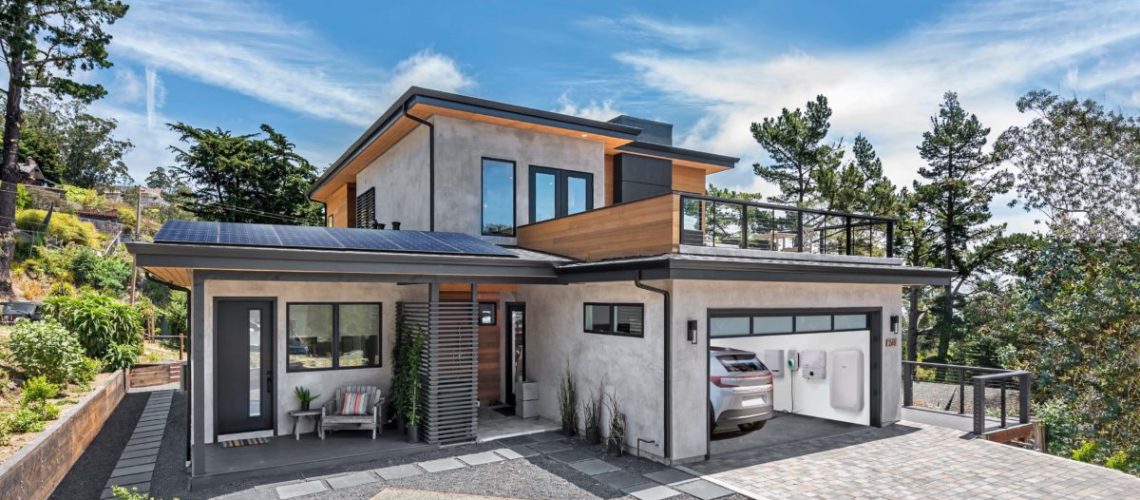The third in a series on virtual power plants, Jigar Shah discusses the range of possibilities for aggregated, behind-the-meter solar and storage in the United States today.
To maintain uninterrupted service with an energy source like solar, energy storage will need to endure affordably for hours or even overnight.
The good news is that cost-competitive solar is here to stay. As the costs of solar components have come down, the industry is now focused on advancing affordability through reducing soft costs and financing costs.
Energy storage technologies have seen a similar trajectory of lower costs, but the most cost-effective applications today are generally limited to shorter-term reliability use cases. Long-duration energy storage technologies are just now scaling up, many using DOE resources to cross the bridge to bankability. (The notable exception is pumped-storage hydropower (PSH); however, unlike PSH, electrochemical storage has few to no locational requirements, lending to its current popularity even in the presence of other storage technologies.)
Between two essential technologies for grid-scale decarbonization – one already being deployed at gigawatt scale and the other quickly reaching revelance for utilities and operators – a 100% clean grid might seem like it’s just waiting for low-cost battery storage technology. But it doesn’t have to be, if customer-owned assets can play a broader role in helping manage the grid.
The limits of solar & storage today
To fully understand why virtual power plants (VPP) are positioned to leverage solar plus storage systems, we first need to understand the technical limitations of both solar and storage that restrict them from acting as a one-size solution to the climate challenge at utility scale.
As I’ve mentioned before, renewable generation is low cost today, but it is variable and not so available on-demand. For this reason, many solar and wind projects have added short-duration storage – because that is all the grid will pay for. In order to decarbonize retiring dispatchable and baseload generation, we will need new tools that shift load with the same level of dexterity that we currently reserve only for electricity supply.
VPPs maximize DER utilization
Pioneering utilities have invested in their own storage at the distribution level for basic reliability services, but most haven’t ventured further than a few hours because lithium-ion batteries are expensive beyond that application. Other battery chemistries promise to be able to provide more cost effective long-duration storage, but they are early in their commercialization cycle. On the other hand, customers are willing to pay top dollar for energy storage on site. Critical institutions like hospitals have an infrequent but mission-critical need for long-duration back-up power; solar homeowners are increasingly installing at-home batteries for when the grid is down or they fear it might be; before long, EV owners will be using their vehicles’ batteries not just to commute but to provide backup power for their home; and the list goes on.
What if utilities or grid operators utilized these distributed energy resources (DERs) during the vast periods they sit idle? Or what if we utilized these distributed assets not just on infrequent occasions to provide local resilience at home, but used them daily to provide benefits to the grid at-large?
Solar, storage, and VPPs in the real world
These questions aren’t just theoretical; VPPs are already offering a straightforward solution for maximizing the value of renewable supply and energy storage proliferating at the grid edge. While novel implementations like the vehicle-to-grid case I highlight are still in early stages, utilities and aggregators together are already pioneering expanded functionalities for distributed solar/storage VPPs at scale:
- Since 2019, utilities in Illinois have offered commercial, industrial, and community solar customers rebates at $250/kW for solar installations in exchange for the installation of a smart inverter, allowing the assets to be used for grid services like voltage and frequency regulation in addition to generating power for the owner;
- In Maryland, Delmarva Power is currently piloting PJM’s first residential VPP with Sunverge, which will provide 0.5 MW/1.5 MWh of distribution-level peak shaving capability to Delmarva Power, provide customers with resilience and backup power, and demonstrate how VPPs can participate in PJM’s wholesale frequency regulation markets heading into PJM’s implementation of FERC Order 2222;
- And in Hawaii, where there is no wholesale market, VPPs are advancing to maximize value for customers and the grid. Swell Energy’s 80MW solar and storage residential VPP is in the early stages of aggregating DERs across three islands to deliver multiple grid services, including capacity build, capacity reduction and fast frequency response. The VPP is managed by Swell’s Distributed Energy Resource Management System, GridAmp, and integrated with Hawaiian Electric’s Demand Response Management System. The VPP can save participants thousands of dollars andenables customer control over home energy systems in the event of an outage.
These projects are differentiated by the degree to which dispatch is automated, how data is exchanged with the wholesale market and/or utility, and the grid services each is providing. In the world of VPPs, software is driving this breadth of innovation, though not without a deep appreciation for the underlying DERs. While not an exhaustive survey of American VPPs, these three examples show the wide range of possibilities for aggregated, behind-the-meter solar and storage in the United States today. They are only a piece of what’s being accomplished across the country, and a sliver of what VPPs are capable of around the world.
No matter where the future takes us, solar and storage technology will continue to be a foundational part of the strong value proposition of VPPs. If recent history is any indication, we will only grow increasingly capable of optimizing DERs to maximize penetration of renewables and defer infrastructure investment without compromising reliability.
Read also the last installment in this series on virtual power plants: Benefits to Affordability of Virtual Power Plants.
Jigar Shah is the director of the US Department of Energy Loan Programs Office.



